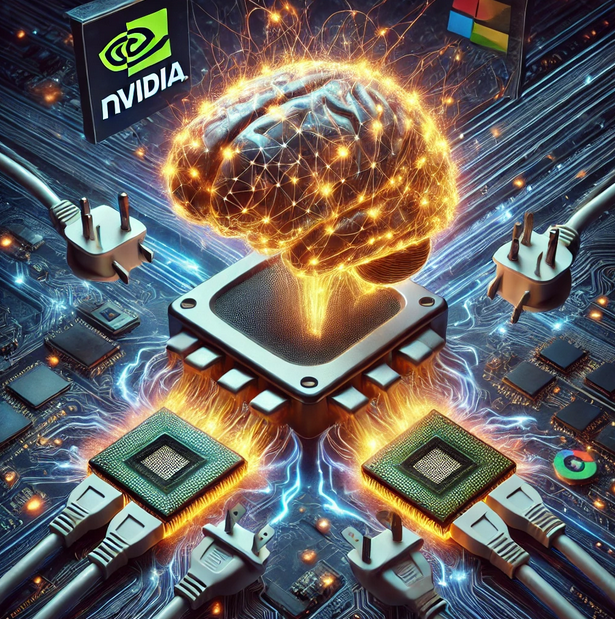(TEM), (UNH), (ORCL), (TDOC), (GOOGL), (MSFT), (CRM)
I've been banging the drum all year about the transformative power of artificial intelligence in healthcare, and Tempus AI's (TEM) new app, Olivia, just handed me the drumsticks.
This beta-launched, AI-enabled personal health concierge is set to change how patients manage their health data, and it's got me more excited than a gecko in a room full of insurance policies.
Here's the problem Olivia's tackling: our medical records are scattered like breadcrumbs across different doctors' offices, hospitals, and that one clinic you visited on vacation five years ago.
In fact, the Journal of the American Medical Informatics Association tells us that about 75% of patients are seeing multiple healthcare providers. That's a recipe for data disaster.
It gets worse. The CDC reports that 60% of American adults are dealing with at least one chronic condition. Try managing that when your medical history is spread thinner than butter on toast.
Enter Olivia. This app is like a vacuum cleaner for your health data, sucking up records from various healthcare providers and organizing them in one tidy place.
We're talking clinical data, scans, slides, molecular tests - the works. But it doesn't stop there. Olivia also lets you track symptoms, sleep, and diet, turning you into your own personal health detective.
It’s secret? Generative AI. Olivia's not just a glorified filing cabinet. You can actually ask this digital assistant questions about your health, and it'll serve up personalized insights faster than you can say "Dr. Google."
Now, before we get too excited, let's talk challenges. Integrating all this siloed health data is like trying to herd cats - technically possible, but fraught with obstacles.
We're dealing with incompatible systems, regulatory mazes (hello, HIPAA), and the ever-present specter of data breaches.
The Department of Health and Human Services reported over 700 healthcare data breaches affecting more than 40 million people in 2022 alone. That's not a number that lets you sleep easy at night.
And let's not forget about the healthcare providers themselves. Some might view Olivia and her AI ilk as disruptive interlopers, messing with their workflows and potentially increasing their workload.
But here's the thing: studies show that when patients get involved in managing their health data, good things happen. The New England Journal of Medicine reports a 20% boost in medication adherence and a 15% drop in hospital readmissions for engaged patients.
Olivia's not the only player in this game, though. The big guns of the tech and healthcare world are all jockeying for position in this space.
UnitedHealth Group Incorporated (UNH), through its Optum division, offers data analytics and technology solutions aimed at integrating data to improve patient outcomes.
Meanwhile, Oracle Corporation (ORCL) made a power move by acquiring Cerner Corporation for a cool $28.3 billion in June 2022. This positions Oracle as a formidable player in healthcare data management and interoperability.
Then there's Teladoc Health, Inc. (TDOC), which saw a 154% increase in telehealth visits during the early stages of the COVID-19 pandemic. They're leveraging AI to enhance patient engagement and care delivery, making healthcare as accessible as ordering a latte on your smartphone.
Alphabet Inc. (GOOGL), through Google Health and DeepMind, is also investing heavily in AI applications in healthcare, including data management and predictive analytics.
Microsoft Corporation's (MSFT) Cloud for Healthcare offers tools for data interoperability and AI-powered insights, contributing to an ecosystem that empowers patients and providers alike.
Salesforce, Inc. (CRM) isn't sitting on the sidelines either. Their Health Cloud is designed to enhance patient engagement and data management, aligning with Olivia's mission to centralize health data and improve patient-provider interactions.
And this isn't just a flash in the pan. The global digital health market is projected to balloon from $96.5 billion in 2020 to a whopping $295.4 billion by 2028, growing at a 15.1% clip annually. That's a lot of zeroes, and it shows that the industry is dead serious about patient empowerment and data integration.
The potential payoff is huge. A study in Health Affairs found that patients using digital health tools saw a 26% reduction in ER visits. That's music to the ears of patients and insurers alike.
With these new developments, the days of fragmented health records and disjointed care are numbered. Olivia and her AI cohorts are introducing an era of personalized, data-driven health management that promises to be as transformative as the invention of the stethoscope.
The future of healthcare isn't just knocking - it's kicking down the door, with an AI assistant holding it open. And trust me, you won't want to miss what comes next.






